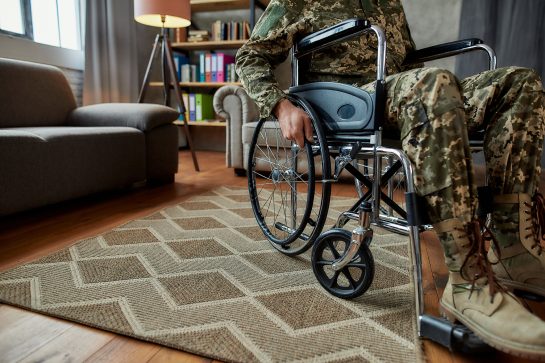There are currently over 19 million veterans in the United States. Each one deserves care from services that understand their unique needs. How well do you know the state of veteran care?
The Needs of Veterans
Veterans are an important, though often overlooked, part of our communities. They consist of over 19 million men and women who have served in the US military, ranging from World War II to current active duty.
Unfortunately, there are several health and behavioral challenges veterans face in comparison to average US citizens. Veterans are 50% more likely to experience homelessness, with over 1.5 million currently at-risk of losing reliable shelter. This group is also more likely to face difficulties with mental health; the rate of PTSD is nearly 15 times higher among veterans than those who have not served.
Many, if not most, of these hurdles tie directly to social determinants of health.
Social determinants of health are the conditions where people live, learn, work, and play that affect a wide range of health and quality of life risks and outcomes.
Many of these hurdles are directly correlated with military service and can easily compound. As such, veterans qualify for specialized care created specifically for them.
Getting Care to Veterans
There are two ways veterans can receive care: either through the VA (US Department of Veteran Affairs) or via private practices and non-profit social services.
Often, veterans need access to several health and human service organizations at the same time. For example, a veteran may need help from:
- A homeless shelter/temporary housing
- A local food bank
- Primary healthcare (particularly for senior veterans)
- A mental health clinic trained in veteran needs
Without proper care coordination, it is easy for one—or even several—of these providers to accidentally let patients fall through the cracks. Alternatively, these organizations may double up on treatments when it is not necessary, using up valuable resources.
Three Ways to Improve Veteran Care
Although veterans may require additional attention and care, there are simple and effective ways for health and human service organizations to increase their effectiveness for this population. We suggest three simple ways to improve care for veterans:
- Increase Mental Health Care
- Reduce Barriers to Care
- Adopt Consistent Standards
1) Increase Mental Health Care
As mentioned earlier, veterans have statistically higher rates of mental illness, including depression and PTSD. An essential part of veteran care is ensuring greater emphasis on mental health care. Health and human service organizations can accomplish this by including behavioral health questions on their intake forms and becoming familiar with veteran-specific resources in their community.
“One of the biggest barriers in mental health treatment is that people – and veterans in particular – often have trouble asking for help,” says Dr. Will Lopez, a US Air Force veteran and psychiatrist.
“A lot of this comes from the military culture. We’re tough. We have to get our boots on and keep going.”
2) Reduce Barriers to Care
In 2018, researchers at BMC Health Services found that one of the biggest barriers to veteran care is difficulty in navigating healthcare services designed specifically for this population.
While this issue is not unique to veterans–many communities that rely on social services report similar difficulties–it is amplified due to the siloed approach to veteran-specific care. Social services can address these issues by reducing barriers to care.
For instance, the average age of a US veteran is 58, suggesting that issues more senior citizens face–like navigating newer technology–need to be specifically addressed. Many health and human service organizations find that implementing care coordination is one of the most effective and comprehensive ways to address these concerns.
3) Adopt Consistent Standards
Finally, our third suggestion for improving veteran care is to adopt consistent standards. As more veterans begin to seek care beyond the VA (through means such as private and non-profit care centers), it is more critical than ever for social services to adopt consistent standards.
Quality, consistent standards across social service providers helps standardize outcomes and improves the effectiveness of veteran-specific program analysis. More and more organizations are finding that collaborating with other programs through effective case management helps accomplish this very goal.
The Future of Veteran Care
Veterans–just like all communities–deserve effective and accessible care. The better we understand the unique needs and challenges that this population faces, the better we can improve their care.



